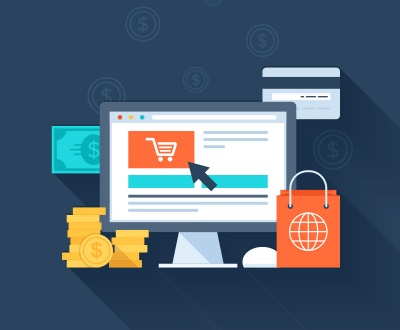 Colors evoke feelings and represent ideas. In marketing your business, knowledgeable and appropriate use of color is critical! Astute use of color can be one of your most effective branding and messaging tools.
Colors evoke feelings and represent ideas. In marketing your business, knowledgeable and appropriate use of color is critical! Astute use of color can be one of your most effective branding and messaging tools.
The psychological effect is instantaneous as color stimulates the senses and exerts its power of suggestion. Color is hard-wired into our psyches – we’ve been using it to identify objects as attractive and useful or dangerous or useless since our days as wooly mammoth hunters. Today color’s effect is seen at every level of communication: in corporate identification and logos, signage, advertising in all its many forms, at point-of-purchase, in packaging and, of course, on the web.
Often called the “silent salesperson,” color must immediately attract the consumer’s eye, convey the message of what the product is all about, create a brand identity and, most importantly, help make the sale. At the very least it must create enough interest or curiosity to induce the would-be buyer to find out more about your product or service.
But effective use of color is a tricky and subtle business. Much of the human reaction to color is subliminal and consumers are generally unaware of the pervasive and persuasive effects of color.
SO WHAT’S IN YOUR COLOR TOOLBOX?
You’vegot the three primary colors: Red, Yellow and Blue. These 3 colors are the base colors for every other color on the color wheel. That’s why they’re called “primary.” Primary colors are useful for designs or art that needs to have a sense of urgency. Primary colors are the most vivid colors when placed next to each other, which is why you’ll notice that most fast food joints use primary colors in their logos, as they evoke speed. Think McDonald’s – with that hot red type and those famous “golden arches.” In our culture we often make the following color associations:
RED
Aggressive, assertive, intense, strength, vitality, life-sustaining, passionate, courageous, insightful, love, passion, danger, warning, excitement, food, impulse, action, adventure, vitality
If people are able to see energy, they’d probably see red (pun intended). Red is the color associated with activity, passion, romance, and adventure. This color is the eternal call to action. In design, you’d do very well to use this color if you are offering something exciting and new to your consumers. It tends to make us hungry and has proven particularly effective for selling food and food supplements. – but not a great selection for a diet coach!
YELLOW
Tropical, sunlit, healing, illuminated, discovery, positivity, sunshine, curiosity, playfulness, cheerfulness, amusement and also cowardice. A popular design color, yellow is associated with feelings of happiness and good cheer. This color suits the inquisitive and the playful. If you want to conjure up feelings of entertainment and amusement and intellectual stimulation, yellow can be a wonderful design color choice.
BLUE
Authority, dignity, security, faithfulness, trust, reliability, belonging, coolness, trustworthiness, success, seriousness, calmness, power, and professionalism. The color of calm skies is the color that people associate with serenity and tranquility. It gives off the feeling of distance and perspective. The color blue can give the person looking at it great reassurance. Deep blues in particular seem analytical, serious, scholarly, academic, naval and regal. Blue offers the bonus of being the world’s least disliked color.
Your Secondary Colors are: Orange, Green, Purple. These 3 colors are what you get when you mix the primary colors together. Orange is a mix of red and yellow, Green is a mix of yellow and blue, and purple is a mix of red and purple. Secondary colors are usually more interesting than primary colors, but they do not evoke speed and urgency the same way the primaries do.
GREEN
Natural, freshness, harmony, mobility, wealth, life, tranquility, health, money, animals, healing, This color is being embraced by those who embody or represent environmental-related endeavors or practices, while darker greens, because of the color of our currency, also remind us of money.
ORANGE
Warm, cautious, hazardous, cozy, energetic, fun, cheeriness, warm exuberance, comfort, creativity, celebration, fun, youth, affordability. This color brings youthful vitality to mind. Some people associate it with cheap and mundane things but many designers choose orange if the brand is targeted towards young people. Think Nickelodeon.
PURPLE
Royalty, spirituality, dignity, sophistication, costliness and mystery, royalty, justice, ambiguity, uncertainty, luxury, fantasy, dreams, magic and wonder, this is purple. Children are inexorably drawn to the color purple. It brings to mind the days of kings and queens, of lords and ladies, of princes and princesses. This is the color to use if your target consumers are children.
Tertiary Colors: are those “in-between” colors like Yellow-Green and Red-Violet. They’re made by mixing one primary color and one secondary color together. There can be endless combinations of tertiary colors, depending on how they’re mixed.
And then you’ve got the Neutrals: Black, White, Grey and Brown
BLACK
Formal, mournful, rich, elegant, serious, seriousness, distinctiveness, boldness, somberness, authority, practicality and a corporate mentality, seriousness, darkness, mystery, secrecy, seriousness, distinctiveness, exclusivity, boldness and being classic/traditional.
While black is also generally associated with death and misery, we are so used to seeing printed text in black and white printing, that this mitigates these associations when it comes to text. However, it may be wise to use it more for accents, rather than as the main color scheme. And remember, a little black here and there may give people the impression of stability and elegance.
GRAYS
Neutrality, indifference, reserve, somberness, authority and practicality. This color may conjure up images of the corporate mentality (think pin-stripe suit) but there can also be something very restful with gray.
BROWNS & BEIGES
Somber, natural, authentic, utilitarian, earthiness, woodiness and subtle richness and simplicity. Brown usually evokes nature and mother earth. However, even if you are branding an environmentally-focused company you should think about using one or more additional colors. Browns on their own may make your design look dull and washed out.
WHITE
Psychologically white is the color or innocence, purity, cleanliness, simplicity, purity, truthfulness, and being contemporary and refined. White has become a very popular background color in web sites, because it offers the best readability onscreen, and as a non-color.
So that is how colors generally signify in our culture. However BEWARE – for a given context, not all versions of a particular colors are created equal. Above we said that blue is associated with strength and assurance. However, imagine a powerhouse industry like IBM with a pale, baby blue logo. Not a winning idea! That’s why there are are two more color words you should know:
VALUE AND SATURATION
Value in this context does not have any thing to do with the works of a color!. Rather it refers to the amount of black or white in a color. The more black a color has in it, the lower its value. Higher value colors, those with less black appear brighter. For those of you old enough to remember think of those old grey-scale bars in the text patterns of black and white television.
Saturation refers to the amount of a color used. When a color is at full saturation, it is extremely vibrant. Pastels and tints are de-saturated colors and they have their own associations. For example PINK evokes femininity, innocence, softness, health, sweetness, innocence, youthfulness, tenderness while pale blues evoke feelings of calm, pacific, ethereal, fresh, clean, and cool. Colors that are extremely de-saturated tend to be close to being neutral because there is so much gray or white in them.
COLOR IN CONTEXT
Now it is important to remember colors are rarely seen on their own! They are usually seen next to other colors (including black and white). The way they relate to each other will have a huge effect on how your image is perceived. To think about color in context it may be useful to embrace two more terms:
Complementary Colors: Red and Green, Blue and Orange, Purple and Yellow. These are the colors directly across from each other on the color wheel. Don’t let the name fool you. They rarely don’t necessarily look together. In fact, they become the contrast makes them extremely vibrant. Complementary colors are useful when you want to make something stand out. For example, if you use a blue background and have an orange triangle on it, the orange will practically jump off the page and be almost blinding.
Analogous Colors: Red and Orange, Blue and Green, etc. These are colors right next to each other on the color wheel. They usually match extremely well, but they also create almost no contrast. They’re good for very harmonious-feeling designs and artwork where you want viewers to feel comfortable. Shades
Shades occur when black is mixed with a color and tints occur when white is mixed with a color, but we can also get wonderful colors by mixing colors with just a bit of a color adjacent on the color wheel – think Chinese red (which tends to be more orange-y red) than primary red or Cherry red, which would have just a bit more blue. We can also get wonderfully complex and sophisticated hues by mixing just a bit of a color with its complement. Take shades of rust, which can be achieved by mixing our reds with just a touch of green.
FINAL THOUGHTS ON YOUR CHOICE OF PALETTE
Think carefully about what you are marketing – what associations are you trying to create? Should your colors be vibrant or soothing, straight-forward or sophisticated or complex. A poor color selection can actually damage your company’s image in the eyes of the public, which the right color selection can go a long way towards creating the image you want to have with your public.
You also need to think about your market – the color associations detailed above hold sway in mainstream North American culture. But not all cultures share these impressions. Fro example, we associate death with the color black, but white is the color of death in Chinese culture, and purple represents death in Brazil. Yellow is sacred to the Chinese, but signifies sadness in Greece and jealousy in France.
There are also technical aspects to color selection. Will your color selections work as well in print as they do on the web? If you are making use of both of these formats, you may want to consider limiting your choice of colors. And remember, not all computers process color the same way! You may need help in choosing colors that are considered “web-safe.” Remember too, that there here are palettes that work well for the disabled.
Overall, effective color choice can be a complex process. But it is also one of the most exciting and tangible choices you can make to communicate your image in a manner that is both effective and compelling. Why not that “silent-salesman” to work for you?
Before moving to Western MA, Dan launched his career in New York in advertising and public relations, where he worked with some of the country’s top brands. Dan also has many years’ experience in small-business and corporate marketing, finance, franchise business operations and field consulting. In 2005, Dan became the first area president of TruePresence, a national internet marketing firm specializing in web design and search engine marketing. Dan’s clients have included Johnson & Johnson, Sears, Warner-Lambert, Monsanto and Pepsi, but he prefers the individuality of his smaller business clients. Dan launched The Green Internet Group to help business owners fully leverage the digital marketing and social media by offering results driven marketing planning, consulting, training and creative services.
About us and this blog
We are a digital marketing company with a focus on helping our customers achieve great results across several key areas.











